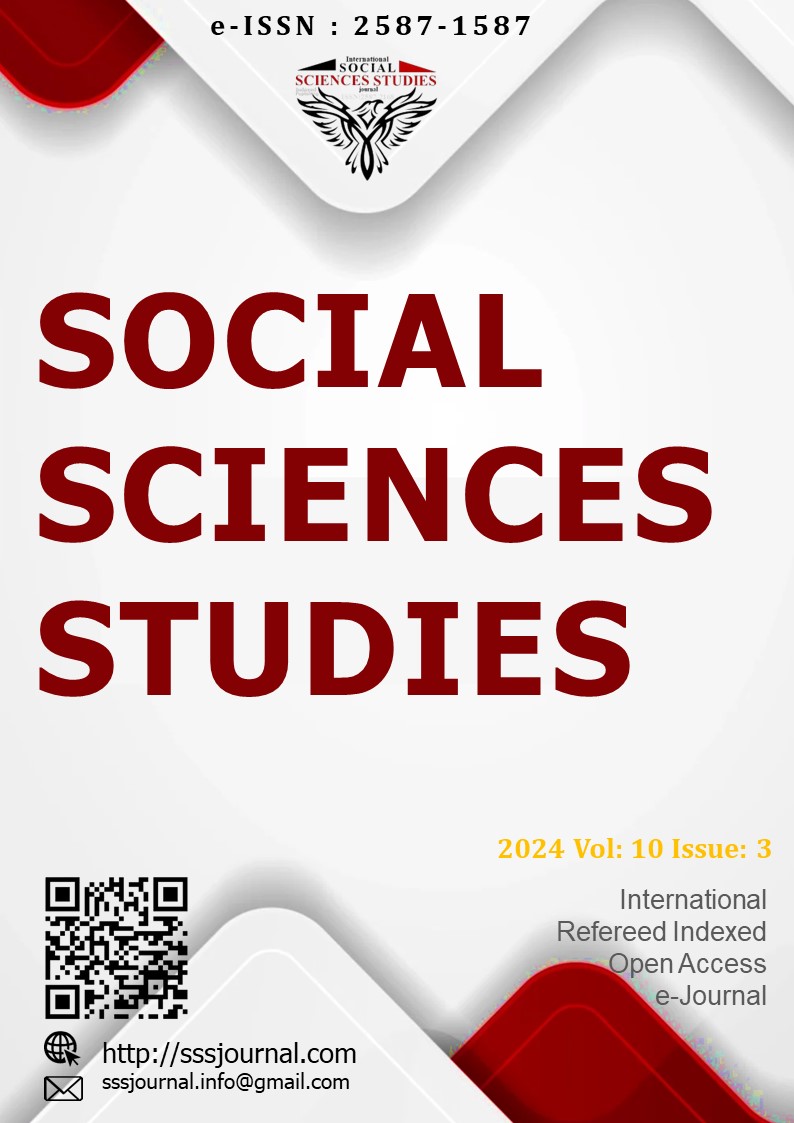Author :
Abstract
Bu çalışma 14-18 yaş grubundaki öğrencilerin sağlıkla ilgili yaşam kalitesini farklı değişkenler açısından incelemek amacı ile yapılmıştır. Bu amaç doğrultusunda çalışmaya Gaziantep il merkezinde bulunan farklı liselerden toplam 448 öğrenci (260 Erkek, 188 Kadın) gönüllü olarak katılmıştır. Araştırmada veri toplama aracı olarak katılım motivasyonu anketi ile SF-36 yaşam kalitesi ölçeği” kullanılmıştır. Elde edilen verilerin istatistiksel analizi için SPSS 22.0 istatiksel paket programı kullanılmıştır. Sonuçlara göre 14-18 yaş grubu spor yapan öğrencilerin cinsiyet değişkeni bakımından katılım motivasyonu alt boyutlarında anlamlı farklılık bulunmamıştır ancak yaşam kalitesi alt boyutlarından fiziksel rol, sosyal fonksiyon ve genel sağlık düzeylerinde anlamlı farklılık bulunmuştur. Takımda oynama değişkeni açısından katılım motivasyonu alt boyutlarından beceri geliştirme, takım ruhu, arkadaşlık; yaşam kalitesi alt boyutlarından fiziksel fonksiyon, mental sağlık ve genel sağlık düzeylerinde anlamlı farklılıklar tespit edilmiştir. Branş değişkeni açısından katılım motivasyonu alt boyutlarından beceri geliştirme, takım ruhu, arkadaşlık, fiziksel uygunluk, yarışma; yaşam kalitesi alt boyutlarından fiziksel rol, canlılık, mental sağlık, sosyal fonksiyon ve genel sağlık alt boyutlarında anlamlı farklılık bulunmuştur. Spora başlama değişkeni açısından katılım motivasyonu alt boyutlarından beceri geliştirme, takım ruhu, eğlence, arkadaşlık, başarı, hareket etme, fiziksel uygunluk, yarışma; yaşam kalitesi alt boyutlarından fiziksel fonksiyon, canlılık, mental sağlık, sosyal fonksiyon, bedensel ağrı ve genel sağlık düzeylerinde anlamlı farklılık tespit edilmiştir. Spor yapma yılı değişkeni açısından katılım motivasyonu alt boyutlarından takım ruhu, arkadaşlık, yarışma; yaşam kalitesi alt boyutlarından fiziksel fonksiyon, fiziksel rol, duygusal rol, canlılık, mental sağlık, sosyal fonksiyon, bedensel ağrı ve genel sağlık düzeylerinde anlamlı farklılık bulunmuştur. Sonuç olarak, spor ile uğraşmak sağlıkla ilgili yaşam kalitesini iyi yönde etkilediği söylenebilir. Bu etkilerin ise ergen bireylerin yaşam tatmini düzeylerini artırdığını söyleyebiliriz. Ergen bireylerin, bu zorlu ergenlik geçiş döneminde fiziksel aktivitelere yönlendirerek yaşam tatmin düzeyleri arttırılabilir ve bu süreci daha sağlıklı bir biçimde atlatmaları sağlanabilir.
Keywords
Abstract
This study was conducted to examine the health-related quality of life of students aged 14-18 years in terms of different variables. For this purpose, a total of 448 students (260 male, 188 female) from different high schools in Gaziantep city centre participated in the study voluntarily. Participation motivation questionnaire and SF-36 quality of life scale" were used as data collection tools in the study. SPSS 22.0 statistical package programme was used for statistical analysis of the data obtained. According to the results, no significant difference was found in the participation motivation sub-dimensions of the 14-18 age group sports students in terms of gender variable, but significant differences were found in the physical role, social function and general health levels of the quality of life sub-dimensions. In terms of the variable of playing in the team, significant differences were found in the levels of skill development, team spirit, friendship from the sub-dimensions of participation motivation; physical function, mental health and general health from the sub-dimensions of quality of life. Significant differences were found in the sub-dimensions of skill development, team spirit, friendship, physical fitness, competition, physical role, vitality, mental health, social function and general health sub-dimensions of quality of life. In terms of the variable of starting sports, a significant difference was found in skill development, team spirit, fun, friendship, success, movement, physical fitness, competition from the sub-dimensions of participation motivation; physical function, vitality, mental health, social function, physical pain and general health from the sub-dimensions of quality of life. A significant difference was found in the levels of team spirit, friendship, competition from the sub-dimensions of participation motivation; physical function, physical role, emotional role, vitality, mental health, social function, bodily pain and general health from the sub-dimensions of quality of life in terms of the variable of years of doing sports. As a result, it can be said that engaging in sports has a good effect on health-related quality of life. We can say that these effects increase the life satisfaction levels of adolescent individuals. Life satisfaction levels of adolescents can be increased by directing them to physical activities during this difficult adolescence transition period and it can be ensured that they overcome this process in a healthier way.





